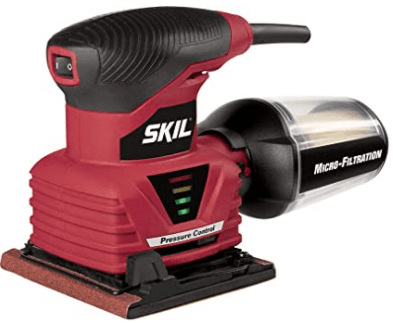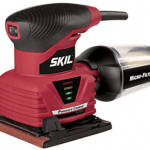Last Updated on April 20, 2021 by James
If you are to ask any average homeowner who is a lot into DIY activities what their favourite projects are chances are high that they will mention sanding wood. Sanding is even more popular than scraping paint. An electric power sander is a convenient, quicker and easier way of sanding wood to smoothen the surface. There are different sizes and types of sanders that we have previously discussed with you. In this article we will guide you on how to choose a sander
But before you get into the basics of the guide, here is a rule of thumb: do not buy a sander or any power multi-tool just for its sanding capabilities. See how many other tasks it can perform, so that it will be really useful and worthwhile for you as a tool in the long run. Your sander should be able to scrape, sand and cut materials such as wood, plastic, concrete, grouting or even metal in some cases.
How To Choose Between Different Models Of Sanders?
All sanders are not equal in terms of their ability to perform so it is important that you know their features well and see how it would be ideal for your work purpose and also in terms of your budget. When you are choosing a sander model, ensure that you consider the following options:
Power:
The different types of sanders come with different levels of power for each individual model. The amount of power you require depends on how tough a job you are going to undertake and for how long would you be doing it.
Durability: See if the sander you have chosen has any distinct feature that can extend their durability. This is really essential for a sander that is going to be used very often, or on a day to day basis.
Vibration Control:
Vibration noise can be really uncomfortable especially when you are overexposed to it. It could also lead to permanent damage if you do not follow the user recommendation of the manufacturer. Having lower level of vibration means that you can work with your sander for longer hours and in comfort and security.
Dust Extraction:
The process of sanding creates a lot of dust, which can really be messy and dirty your workspace. So see to it if your sander comes with a dust bag or not and how big the size of the bag will be. Not all sanders of course come with a dust bag but there are many higher end models which do provide with one. Also see to it if you would require a vacuum extractor or not.
Ease Of Use:
If you are working on a budget, then you might have to compromise on this feature. However if you are willing to spend extra on added features which are also comfort enhancing such as light low weight, well positioned switches, and ergonomic design then go for it!
Conclusion
Power sanders are ideal for all kinds of sanding jobs which might take you long hours when you will do them with your hands. Aforementioned, there are a wide range of sanders, each with their own advantages and disadvantages depending on the work that you are doing. They consists of a motor that can move a sanding head which holds a sanding pad, belt, sleeve, or a sheet of the sandpaper. Now that you know how to choose between the different types of sanders, let us know your thought on this topic or we would love to hear about experiences of using it.
Also if you’re looking for a stand for your miter saw, we have written a buying guide for miter saw stands.

